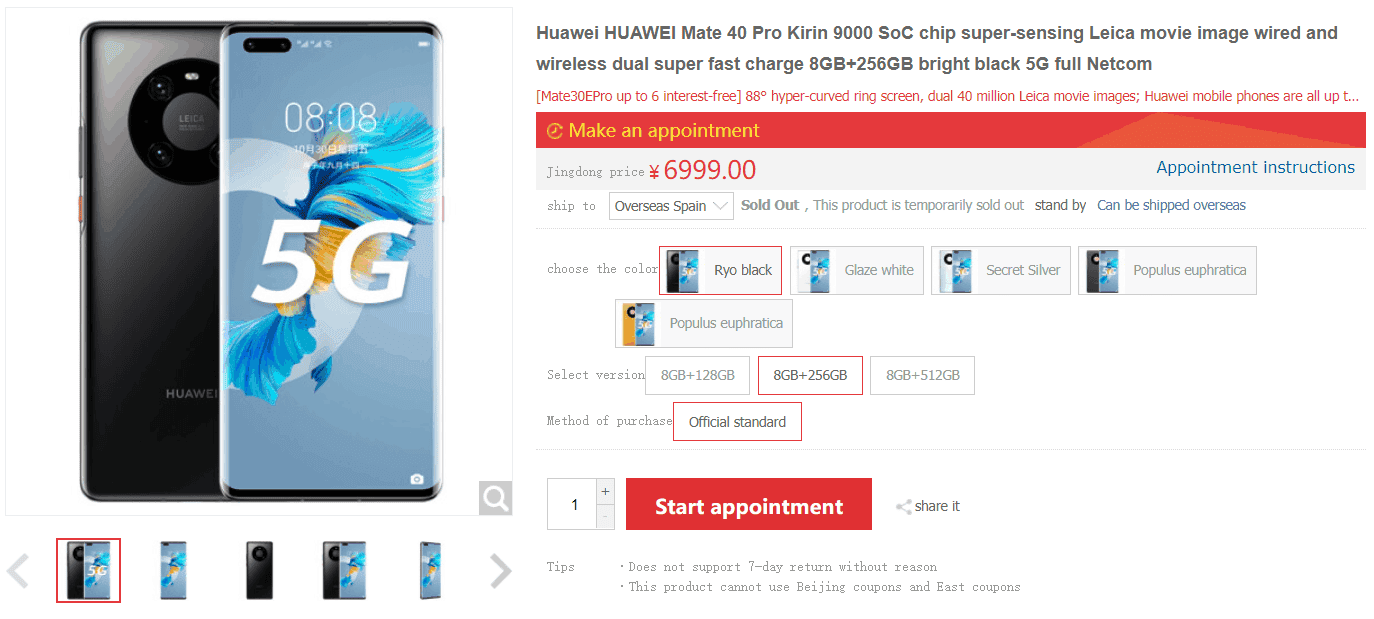In October 2020, Huawei officially released the Mate 40 series of flagship models of the year. This series has four models including Huawei Mate 40, Mate 40 Pro, Mate 40 Pro +, and the Mate 40 RS. These smartphones are hardly on the shelves considering Huawei’s recent predicarment. However, The Mate 40 and Mate 40 Pro will be on sale today. In the first official sale, the entire series was only available for 11 seconds before selling out. The Huawei Mate 40 comes with a 4999 yuan ($774) starting price.
The available information from JD.com shows that the Huawei Mate 40 series is the most popular smartphone on its platform presently. The data shows that within one hour, the number of users searching for the Mate 40 series is 600% higher than the Mate 30 series.

JD.com had the Mate 40 series on the first day of official sales. This platform has a lot of incentives for buyers of this phone. Some of them are
- One month worry-free refund
- One year “for no reason” replacement of the battery
- Exchange of an old device for the Mate 40 series. The subsidy rate gets as high as 3,000 yuan ($448). Of course, this will depend on the quality and current status of the old device.
When available, users of the Huawei Mate 40 RS Porsche Design will have more exclusive incentives.
Mate 40 series – the most powerful Mate phone in eight years
After eight years and ten generations of innovation, the Huawei Mate 40 series has become the “most powerful Mate phone in history. It comes with improvements in design, performance, camera, and user experience.
All the smartphones in this series come with the Kirin 9000 series chip. While the Mate 40 Pro, Mate 40 Pro+, and Mate 40 RS Porsche Design use the Kirin 9000 processor, the Mate 40 is equipped with Kirin 9000E processor.
The Kirin 9000 5G chip uses a 5-nanometer process, integrates 15.3 billion transistors, uses an eight-core CPU, a 24-core Mali-G78 GPU, 2 large cores + 1 small core NPU. Although the Huawei Mate 40 uses a Kirin 9000E SoC, the difference between this chip and the Kirin 9000 is minimal.
Both processors come with a Mali-G78 graphics and image processor. However, while the Kirin 9000 uses a 24-core version, the Kirin 9000E has 22 cores. In addition, the NPU part of Kirin 9000 uses a combination of 2 large cores + 1 micro core. However, the Kirin 9000E is a combination of 1 large core + 1 micro core. Overall, the Kirin 9000E is the “youth version” of the Kirin 9000.






